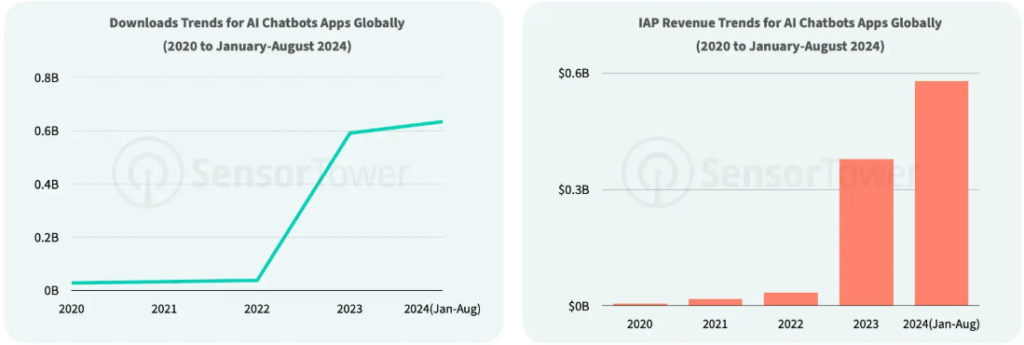Artificial intelligence is not just a buzzword anymore. It’s no longer about some far-off future. It’s here, it’s everywhere, and it’s changing the way we live — especially how we use our phones. Mobile apps are evolving fast, and artificial intelligence is the engine behind most of the changes. From smarter user experiences to personalized features, mobile apps are becoming more helpful, more responsive, and more human-like.
In 2025, it’s no longer surprising to get recommendations on what to watch, where to eat, or what route to take — all powered by machine learning. This shift didn’t happen overnight, and it’s not stopping anytime soon. Let’s walk through how this powerful force is reshaping mobile apps and why it matters for developers, businesses, and everyday users.
The Rise of AI in Mobile App Development
Mobile apps used to be tools. Now, they act more like assistants. The number of apps using artificial intelligence grew by over 310% from 2019 to 2024, according to data from Statista and CB Insights. This growth isn’t just about adding a chatbot. It’s about designing apps that can predict behavior, automate tasks, and make better decisions.
According to Sensortower, the global IAP revenue of AI+Chatbot apps reached nearly $580 million in the first 8 months of 2024, already exceeding 1.5 times the 2023 total.

Research from Deloitte shows that 92% of mobile app development companies are either using or planning to use artificial intelligence in their apps within the next year. Why? Because users expect apps to be fast, smart, and personal. Developers are simply following that lead.
Smarter User Experiences
Artificial intelligence is quietly working behind the scenes of many apps to make things feel seamless. The best example? Predictive text. Most people type faster now, not because they’ve become better at typing but because their keyboards guess the next word. And most of the time, the guess is spot on.
That’s artificial intelligence. It learns how each person writes, picks up on tone, and adapts. Google’s Gboard and Apple’s QuickType are clear examples. The systems adapt and evolve, which means the more someone types, the better the suggestions get.
Another use case is facial recognition. Apps like Face ID and Google Photos analyze facial features not only for unlocking phones but also for tagging photos, filtering images, and organizing libraries automatically. According to a report from The Insight Partners, the global facial recognition market will reach $12.67 billion by 2028, up from $5 billion in 2021.
That tells us one thing — smarter experiences are becoming non-negotiable.
Personalization That Feels Personal
Mobile apps today know a lot. What someone listens to, watches, buys, skips, reads, scrolls past, and even how long a finger hovers before clicking. Artificial intelligence takes all of that and builds a profile that isn’t just about selling more stuff. It’s about showing users what feels right.
Spotify is a good example. Its algorithm doesn’t just pick songs from the same genre. It notices moods, patterns, and even tempo preferences. According to Spotify’s engineering blog, more than 60% of user interactions are influenced by AI-based recommendations. That’s not a coincidence.
Retail apps also lean heavily on artificial intelligence. Think about Amazon or Flipkart. They not only recommend products but also predict delivery times based on traffic, weather, warehouse locations, and user behavior. This type of personalization is now so ingrained, most people don’t even notice how much is happening behind the scenes.
Voice Is the New Touch
Speaking to phones used to feel awkward. Now, it’s common. Siri, Alexa, and Google Assistant are part of everyday life. But voice tech is growing beyond just setting reminders or asking for the weather. AI-powered voice recognition tools are finding their way into healthcare apps, banking, and customer support.
As per Juniper Research, voice assistant usage through mobile apps is expected to hit 8.4 billion devices by the end of 2024. That’s more than the entire human population.
Why does it matter? Because it shifts how people interact with their phones. No longer are users limited to tapping and swiping. They can speak, listen, and get responses that sound increasingly natural. Developers are building more apps that understand tone, context, and even emotional cues.
This human-to-machine interaction is about to leap forward again with advancements like Whisper (by OpenAI) and BERT (by Google). These models are getting better at understanding accents, dialects, and conversational quirks.
Real-Time Translation and Accessibility
Language barriers are disappearing. Apps like Google Translate or Microsoft Translator are using real-time translation to help people speak across cultures without missing a beat. This tech is powered by neural networks that process and translate speech instantly.
In 2024, Google Translate reached 133 supported languages, and the real-time translation feature was used in over 1.2 billion interactions per month. This isn’t just convenient — it’s game-changing for travel, education, business, and accessibility.
For those with hearing or visual impairments, apps now offer live transcription, object detection, and screen reading with remarkable accuracy. AI is helping build a digital world where more people are included.
AI in Health and Wellness Apps
The health tech space on mobile is exploding. From sleep tracking to mental health support, apps are using artificial intelligence to offer features that were once only possible through medical devices.
Take fitness apps. They’re not just counting steps anymore. They monitor heart rate trends, predict stress levels, suggest workouts based on recovery data, and even detect signs of conditions like sleep apnea. AI-driven platforms like Fitbit, WHOOP, and Apple Health are leading this charge.
A 2023 study in Nature Digital Medicine showed that artificial intelligence was 30% more accurate in predicting early signs of heart failure than traditional models when integrated into mobile health platforms. That’s more than just tech. That’s life-saving.
Mental health is another area. Apps like Wysa and Youper use AI-driven chat to provide support, recommend coping strategies, and track mood trends over time. They’re not replacements for therapy, but they are accessible first steps for millions.
Security and Fraud Detection
The more mobile apps we use, the more personal data we share. With that comes risk. Artificial intelligence is now critical in protecting data and keeping digital lives safe.
Banking apps use AI to detect unusual transactions, prevent phishing attacks, and stop unauthorized access. According to IBM’s Cost of a Data Breach Report 2023, AI-driven security systems reduce breach costs by an average of $1.76 million.
Even small features like biometric login, two-factor authentication, and fraud alerts rely on real-time AI systems that learn from millions of data points. They’re not static rules. They’re dynamic protections, evolving with each new threat.
What’s Coming Next?
AI and mobile apps are on a collision course with several future trends. Here’s where things are heading:
1. On-Device AI
Instead of sending data to the cloud, phones will do the thinking right there. Apple’s new chips already include AI cores that process commands without needing the internet. This means faster response, better privacy, and longer battery life.
2. Generative Features
Users will soon design wallpapers, write emails, or generate music directly from their apps using generative tools. Canva and Adobe are already doing it. Imagine a messaging app that suggests an entire photo caption or a fitness app that builds a workout plan from scratch.
3. Hyper-Personalization
AI will stop treating users as segments and start treating them as individuals. Think news apps that curate updates based on stress levels or productivity apps that shift priorities based on mood and sleep. It’s not far away.
The Bigger Picture
Artificial intelligence in mobile apps isn’t about replacing people. It’s about making digital tools more in tune with how people live, think, and feel. The shift is from static to dynamic, from generic to personal, and from passive to proactive.
It’s easy to see artificial intelligence as this big, complicated force. But in the context of mobile apps, it’s surprisingly down-to-earth. It helps us get things done faster, discover new things, stay healthy, stay safe, and stay connected.
And while the full impact is still unfolding, one thing is certain: mobile apps will never go back to being simple tools. They’ve become companions — smarter, sharper, and more helpful than ever.



